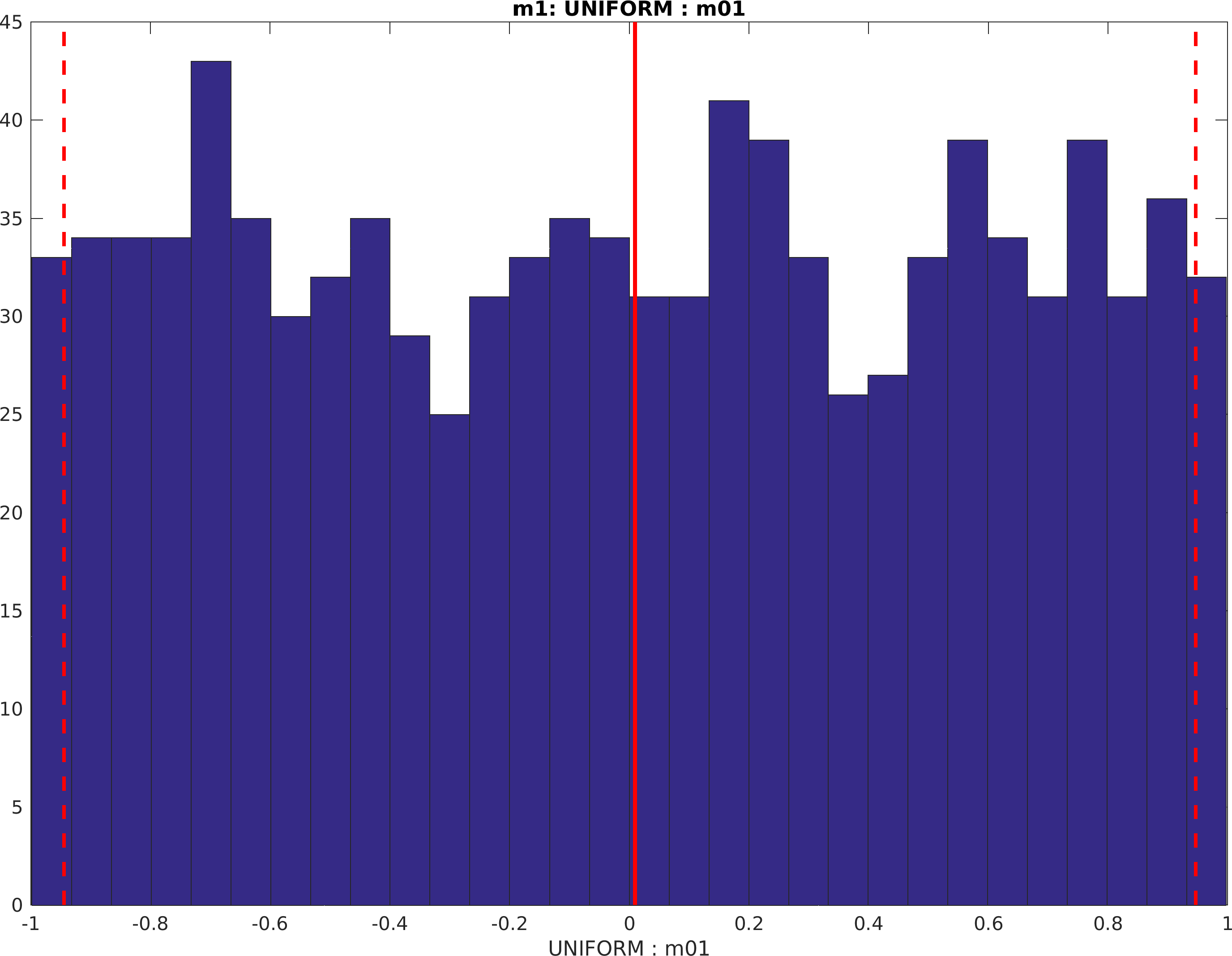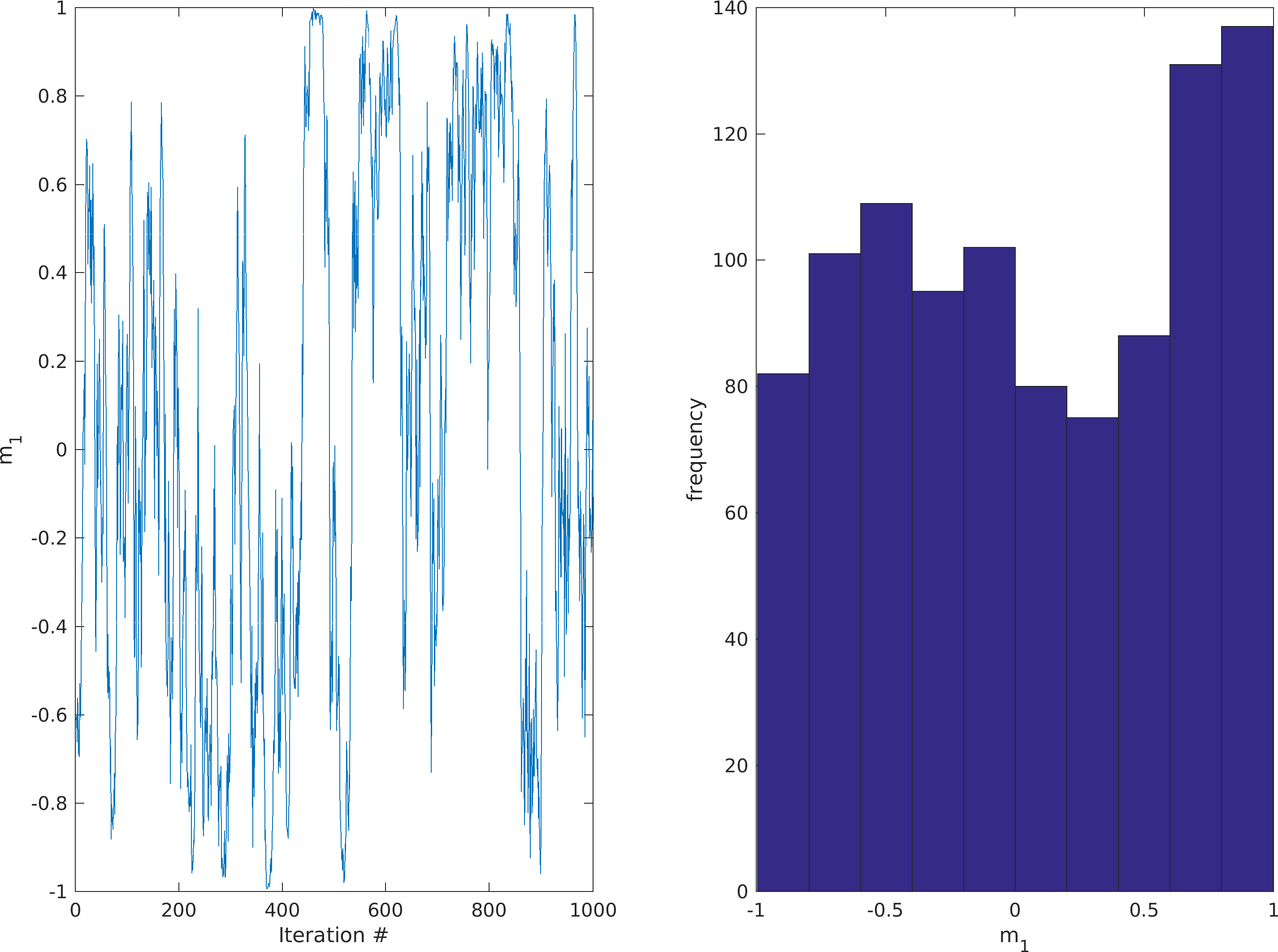Uniform distribution
A uniform prior model can be specified using the 'uniform' type prior model
prior{1}.type='uniform';
The only parameters needed are the minimum (min) and maximum (max)
values. A 1D uniform distribution between -1 and 1 can be specified as
prior{1}.type='uniform';
prior{1}.min=-1;
prior{1}.max=1;

Random walk using sequential Gibbs sampling
A random walk in the uniform prior (as in any supported prior type) can be obtained using sequential Gibbs sampling:
%% seq gibbs
prior{1}.seq_gibbs.step=0.2;
N=1000;
m_all=zeros(1,N);
[m,prior]=sippi_prior(prior);
for i=1:1000;
[m,prior]=sippi_prior(prior,m);
m_all(i)=m{1};
subplot(1,2,1);plot(1:i,m_all(1:i));
end
xlabel('Iteration #')
ylabel('m_1')

Higher order model
By setting the x, y, and z parameter, a higher order prior
(uncorrelated) can be set. For example 3 independent model parameters
with a uniform prior distribution between 20 and 50, can be defined as
prior{1}.type='uniform';
prior{1}.x=[1 2 3];
prior{1}.min=20;
prior{1}.max=50;
Note that using the 'uniform' type priori model, is slightly more computational efficient than using a 'gaussian' type prior model with a high norm.